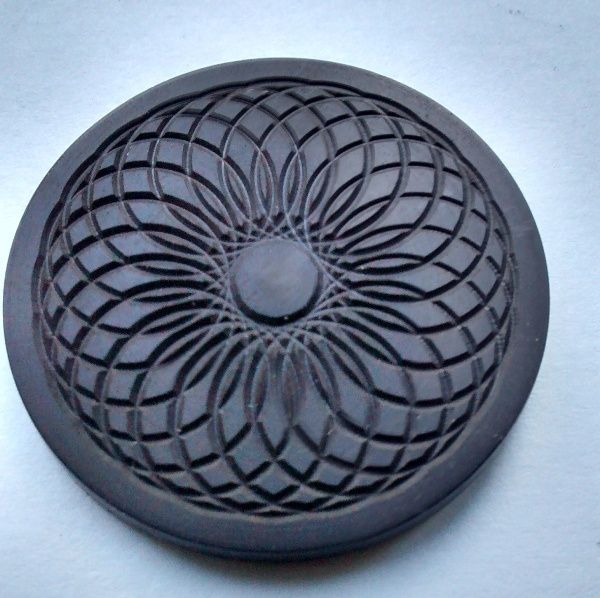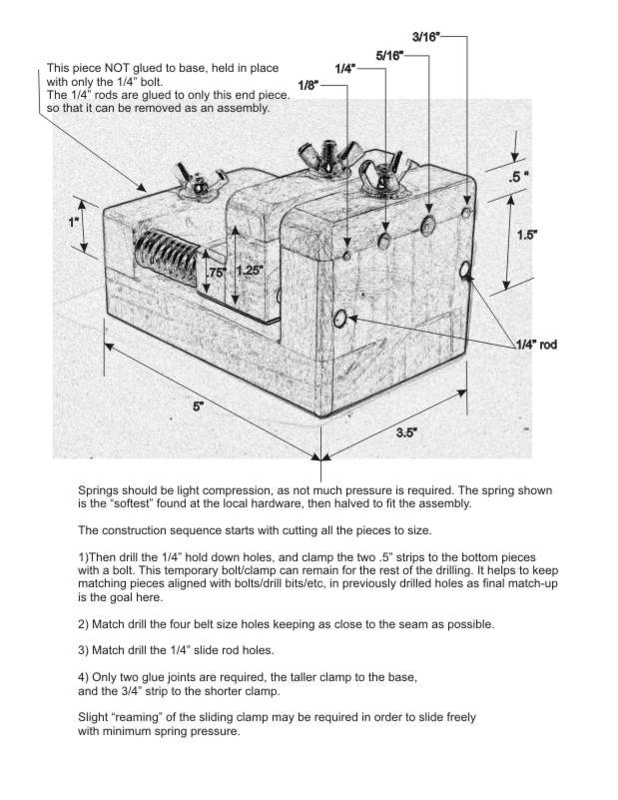Overview
 Design cut into Design cut into
the side of a piece
|
 Design cut into Design cut into
the end of a piece
|

Barley corns
Barley corns are the part harvested from the barley plant. When de-husked, the corns look like the picture to the left.
Using an eccentric cutting frame, similar patterns can be produced on the end or side of a piece. Examples are shown to the right.
Oftentimes, when designs are cut into the side of a piece, the design is called a barley corn, and when cut into the end of a piece, the pattern is called a turk's head.
That convention seems to be fairly fluid, and barley corn often gets applied to designs cut into the end of a piece.
This document addresses cuts into a flat surface (e.g., the end of a piece). For a discussion of cuts into the side of a piece, see the article, ECF on Flat Surfaces.
########################################################################
### Additional pictures of this device
########################################################################
Additional pictures of this device
########################################################################
### Additional examples of work
########################################################################
Additional examples of work
########################################################################
### Examples of this device in use
########################################################################
Examples of this device in use
########################################################################
### Notes on Cutting into the Side of a Piece
########################################################################
Notes on Cutting into the Side of a Piece
########################################################################
### How it works
########################################################################
########################################################################
### Notes on making one
########################################################################
########################################################################
### Sources for buying one
########################################################################
########################################################################
### Sources for buying cutters for one
########################################################################
Sources for buying cutters for one
########################################################################
### More Information
########################################################################
More Information
Published Articles
Books and Papers
- Eccentric Turning, by an Amateur (actually, Nathaniel Brown Engleheart). This is an excellent book with great examples and instructions on how they were produced. It is available as a re-print and that is probably sufficient for use.
Web Sites
- John Edwards' web site, OrnamentalTurning.co.uk, has really great information about the setup and use of these devices. There is a lot of great information on John's web site, and it is worth reading. Understanding the history behind the devices we use really helps make one far better at understanding and using today's rose engines. And, as I noted elsewhere on this site, the newer designs for devices like a spherical slide still draw much from what was done more than a hundred years ago. And this is why so many books that were written up to 200 years ago are referenced in the books section.
Presentations
Other
########## Standard Footer for all pages ##########
|
About this Site
Disclaimer: eMail comments to me at OTBookOfKnowledge @ Gmail.com. The process of woodturning involves the use of tools, machinery and materials which could cause injury or be a health hazard unless proper precautions are taken, including the wearing of appropriate protective equipment.
|




